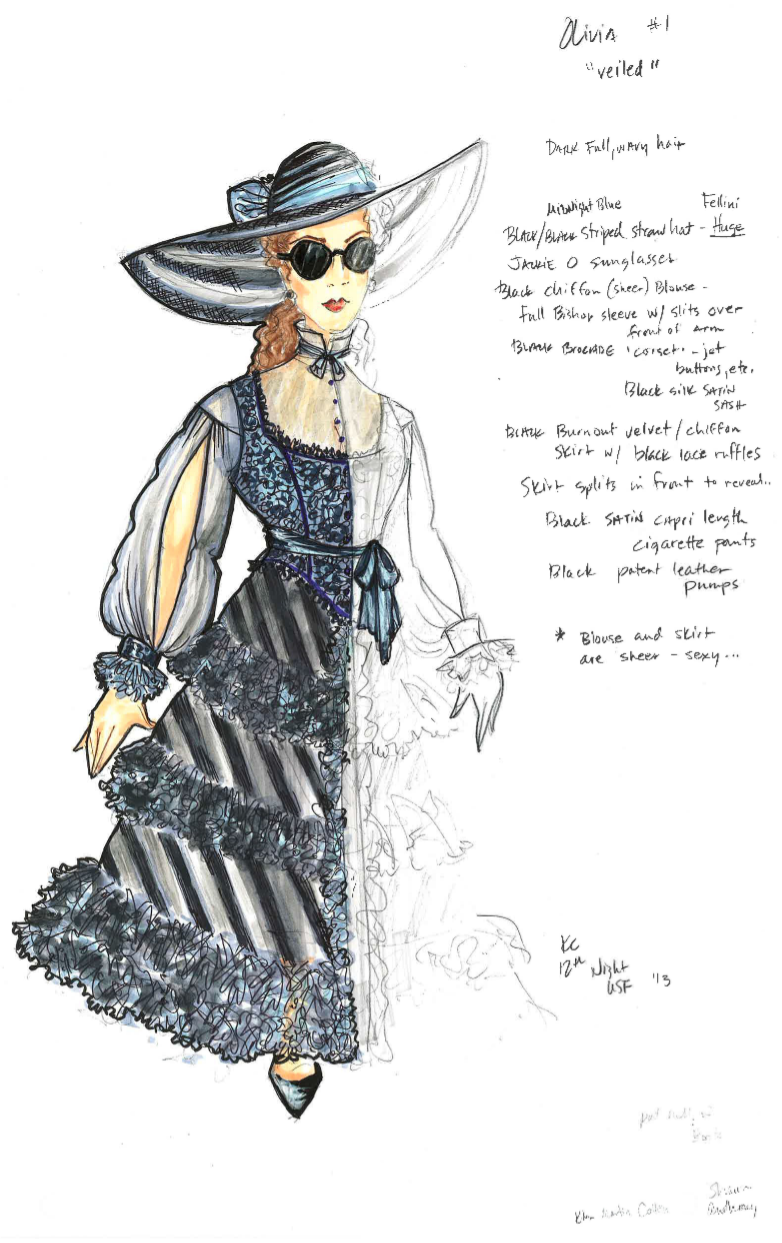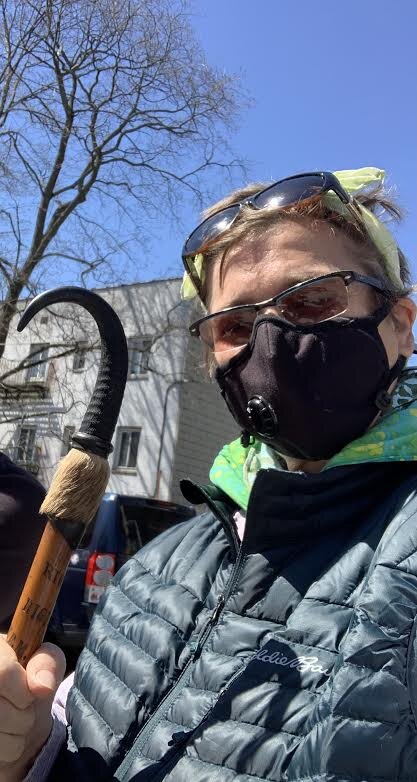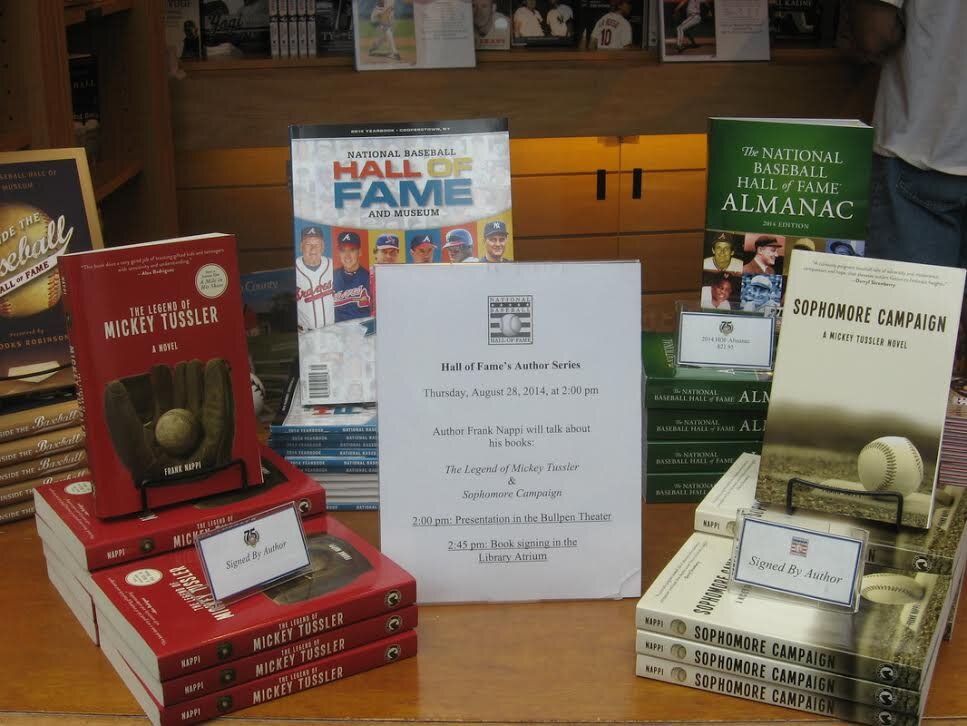Costuming for theater is more than it seems. When costuming a production there is much to be considered.
Most audience members visually see the performers on stage and do not recognize to what extent costumes play a vital role in the execution of a story. A costume designer goes through several rigorous tasks to complete the process of creating a costume specific to a character based on a story.
On stage, a character appears and what they wear influences how they interact with other actors, set pieces, choreography and many other elements they encounter. Costume design is a fundamental part of each production as it is in any other department related to mounting a production. It is a collaborative work between the lighting designer choreographer, director, and the costume designer.
To achieve a successful costume design, a designer must understand all of the requirements of the character by reading the play and highlighting each necessary element to make the character come alive.
Research is a very important feature in executing accuracy of each design. The costumer must understand shape, color, style, and form for each era of clothing.
Rendering is the second phase after the design process. After sufficient research has been conducted, the costume designer sketches and paints what each costume would look like on the actor’s body and how it would move on the character. After rendering costumes sufficient for the production and being approved by the director, the costumer could now start acquiring pieces of costume either by making, fabricating, renting, or borrowing.
Clear renderings provided to shop managers and fabricators makes the design process a bit easier. Patterns on costumes may not always be exactly what is sketched by the costumer, but it must be approved if a variant is acquired elsewhere. Costumes may be acquired from other theater companies that have used similar pieces, or that have been made, drafted from flat patterns.
Before starting the process of acquiring costumes, measurements must be taken for each actor. These must be taken accurately for a proper fitting. Several measurements, which are standard to the clothing industry, can be used to design a costume, or the costume designer can formulate their own set of measurements.
With all the necessary measurements, the design crew can now acquire all the costume pieces required for the production. After the chief costume designer has approved each piece, fittings can be scheduled for the actors and actresses. If the costume designer has selected a piece that is appropriate for the character but does not fit the actor, then alterations can be made to adjust the piece so that the costume fits the actor appropriately.
Once all the pieces are acquired by the shop crew and approved by the costume designer, a costume parade is scheduled to present the selected costumes to the director for their authorization. In this meeting, it is essential to have the lighting designer present so they can also have an idea how the light will cast upon the characters’ costumes.
Once the director, the lighting designer, and the costume designer have approved all pieces, costumes can now be placed for the performers access during the technical week ahead of opening. If there is a particular case where the actor needs a piece for rehearsal, a mock piece or rehearsal piece is provided.
These basic steps can assist with executing a proper costume design for a production. There are a lot of different elements to take into consideration when designing costumes. How they move on the performer, how they appear onstage under lights and how they fit performers are all elements to a successful design. Research, rendering, measuring, acquiring, and fittings must be done for every production. If all these steps are followed and fit within the budget of the production, you will have a successful costume design.
Avelon Ragoonanan
Artistic designer with over 20 years in the performing arts from Trinidad and Tobago
Avelon Ragoonanan is an artistic designer with over 20 years experience in the performing arts. He is from Trinidad and Tobago. Avelon has designed productions in the Caribbean and the United States. He has worked with Pacific Lutheran University, Act 1 Theatre Productions, Cirque Du Soleil and many other theatres on several design elements including scenic design, costume design and construction. Avelon has designed for shows Off Broadway and on US tours for productions such as Dance Ensemble (2011-2015), Macbeth, A Midsummer’s Night Dream, Almost Maine, Our Town, Empowered, Mrs. Packard, Dead Man’s Cell Phone, Steel Magnolias, Inspecting Carol, Kiss Me Kate, Mother Courage, Three Sisters, and Into the Woods. He holds a Bachelor of Fine Arts in Dance and a Bachelor of Fine Arts in Theatre and has won several awards for designing, acting, dancing, choreography and directing. Avelon has also had the honor to perform for the President of the Unites States in the Summit of the Americas in 2009.
G&E In Motion does not necessarily agree with the opinions of our guest bloggers. That would be boring and counterproductive. We have simply found the author’s thoughts to be interesting, intelligent, unique, insightful, and/or important. We may not agree on the words but we surely agree on their right to express them and proudly present this platform as a means to do so.




























